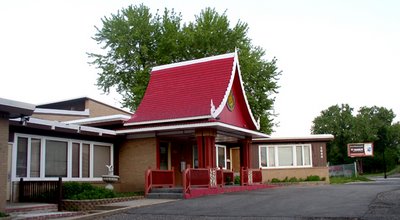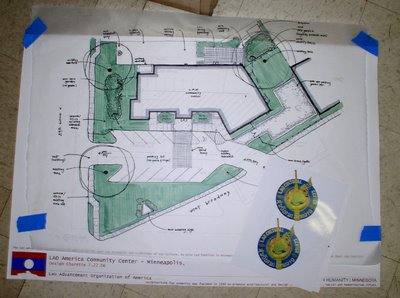
The LAO America Facility.
The Lao Advancement Organization of America (LAO America) is a non profit organization based in Minneapolis, Minnesota whose core mission is to “give local Lao families the tools they need to succeed in their new homeland. They have been helping the Laotian community foster education, employment, and economic opportunities since 1988.
After years of serving the community, they decided it was time to take a step back and re-evaluate their facility. They got in touch with AFHMN, and after a few initial visits to the building, we held a charrette. The goal of the charrette was to break up the rather daunting task of building renovation into managable chunks of information for LAO America to digest and take action on.

Charrette participants hard at work in the main hall.
On the morning of Saturday, July 22, members of Architecture for Humanity Minnesota and local designers, builders, and students interested in helping met at the LAO Cultural Center for a design charrette focused on improvements to the group's existing building and site. Participants divided into four groups to focus on specific design issues: site, exterior building, interior building, and sustainability. After a morning of working and discussion with several LAO America community members, everyone shared a meal of traditional Laotian food, and the four teams presented their drawings and ideas.

A site plan, one of many drawings produced for LAO America.
Todd Melby of KFAI Radio spent the morning with us, documenting the charrette process. You can hear the show as part of of the podcast "Building Minnesota" here.
We'd like to thank everybody who came to volunteer at the charrette, including LAO America for inviting us, and Todd Melby for taking some time to help more people see, or rather... hear, AFHMN in action.
LAO America project updates to come as they happen.







